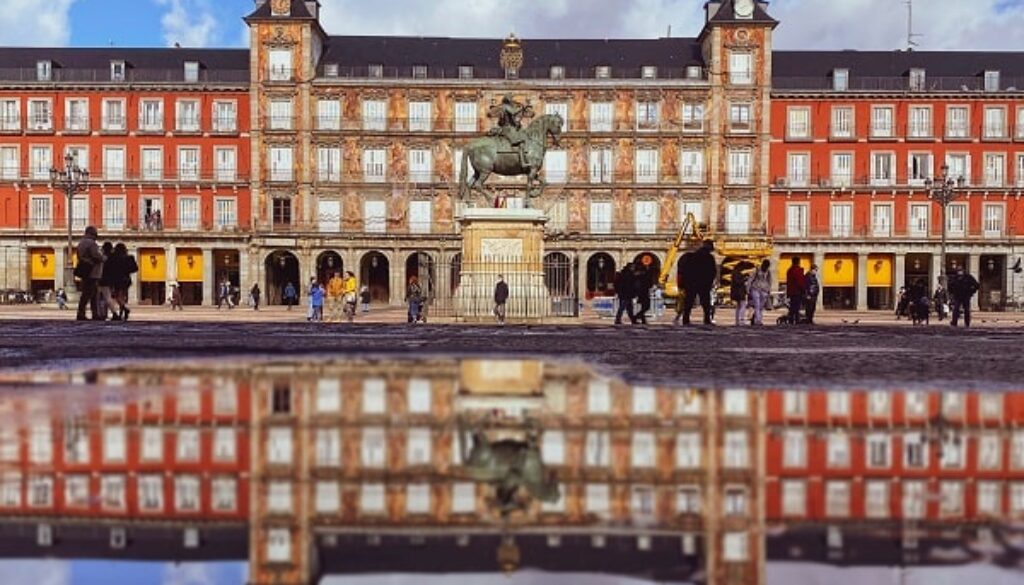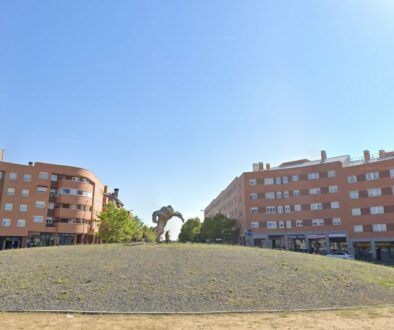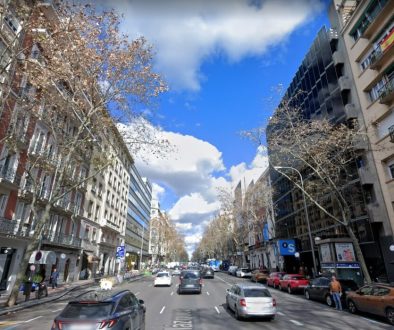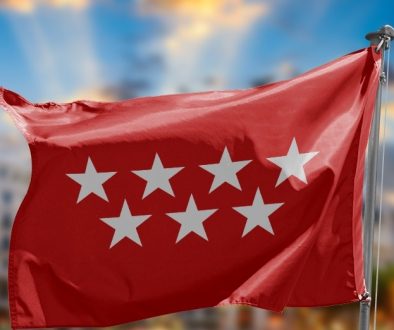Madrid, a welcoming and lively city
Thinking of moving to Madrid? Here is an overview of what this beautiful city has to offer.
Madrid is Spain's nerve centre and, in its famous Puerta del SolThe country's kilometre zero is identified with a plaque marking it. The representative sculpture of the Bear and the Strawberry Tree It presides over the square and underpins this geographical point with distinction, so that many tourists take photographs of themselves next to this symbol of Madrid to immortalise their visit to the capital. If you plan to move to MadridRead this article to convince yourself.
Madrid character
Madrid is a welcoming city by tradition and by excellence. Madrileños are outgoing people with a special vitality that makes them perfect hosts. It is an open and multicultural city, with an impressive artistic heritage, an efficient public transport network, a competent health system and a great gastronomic, cultural and leisure offer.
Population and climate
With a population of more than three million inhabitants, the city is the most populous Spanish city, the sixth most populous in Europe and the sixty-eighth most populous in the world. It is, therefore, a city with a large population without being as tumultuous as other major capitals. Nevertheless, In the Community of Madrid there are about 6,700 inhabitants living in an area of 8,028 km².The population is distributed in the city centre, in the various neighbourhoods and in towns or dormitory towns located in the suburbs.
In terms of climate, Madrid has a local steppe climate, with an average annual temperature of 14.5° Celsius. It is a dry and sunny climate, with a continental profile that makes for hot summers and cool winters, with little rainfall throughout the year. On most days the sky is so intense and peremptorily blue that visitors are surprised and enchanted by it.
Some of Madrid's ideal neighbourhoods to live in:
The city of Madrid is a capital city full of contrasts that has 21 districts which, in turn, group together a total of 131 administrative neighbourhoods. In case you are thinking of buying a home in Madrid, here are some of the characteristics that stand out in some of the residential neighbourhoods:
Withdrawal:
In the pure centre of MadridThis area offers everything an urbanite could wish for. It is also an ideal place to live with children, as the distances to any place are short and it is considered one of the great green lungs of the city, thanks to the beautiful Buen Retiro park, which lends its name to the neighbourhood.
Chamberí:
It is one of the legendary areas of Madrid and time has made its buildings show a contrast of neo-Gothic, neo-Mudejar and modernist character at the same time. The styles are intermingled and offer a very particular image, to say the least. This central area offers all kinds of services such as shops, hospitals, schools, etc.
Chamartín:
An area that, located in the north of the cityis considered one of the most select neighbourhoods of Madrid. It is home to buildings such as the Chamartin train station, the Four Towers -whose lofty silhouettes stand out above countless buildings - the colony El Visothe Santiago Bernabéu StadiumIt is also a distinguished area with all kinds of services.
Moncloa-Aravaca:
It is a leafy district that, among other things, is home to the Casa de Campoanother of Madrid's great lungs, which offers the possibility of outdoor activities and can also be reached by cable car.
Administratively, it is divided into the districts of Casa de Campo, Argüelles, Ciudad Universitaria, Valdezarza, Valdemarín, El Plantío and Aravaca. All of them, with their particularities, are perfect for living.
Fuencarral-El Pardo:
It is divided into the neighbourhoods of El Pardo, Fuentelarreina, Peñagrande, Pilar, La Paz, Valverde, Mirasierra and El Goloso. The land in this district belongs to the former village of Fuencarral and the Real Sitio de El Pardo and their old quarters were the basis for the consolidation of both and the seed that gave birth to the current situation. It is a very large but sparsely populated district. It includes, for example, Las Tablasa very well communicated residential area with many businesses, and MontecarmeloThe property is very spacious and has a lot of green areas.
San Chinarro and Valdebebas:
These are neighbourhoods that have developed in recent years. San Chinarro is a place where many young families live. It is very well provided with services such as schools, hospitals, shopping centres, etc. and it is very close to the Adolfo Suárez airport. ValdebebasThe area is a large wooded area where, in addition, the Real Madrid sports complex is located.
Representative monuments and landmark buildings of Madrid:
Madrid is a monumental city par excellence. Some places of interest located in the centre of the city which stand out for their tradition are
- The aforementioned Puerta del Solwhere we see many millions of people pass through every year and a place where crowds of people also gather to eat their grapes on 31 December in front of the clock at the Casa Real de Correos.
- The Puerta de Alcaláone of the five gates which formerly gave access to Madrid, located on the Independence Square roundaboutwhich was built by Francesco Sabatini by order of Charles III.
- The Cibeles Fountain stands regally in the centre of the square of the same name. It was also built by order of Charles III with the aim of embellishing Madrid.
- Plaza de Colón: It is at the crossroads of very commercial and central streets such as Goya, Genova and the Castellana and Recoletos avenues. It is presided over by the neo-Gothic monument to Christopher Columbus.
- The beautiful Almudena Cathedral located in the Hapsburg Madrid, which was consecrated by Pope John Paul II in 1993.
- The Las Ventas bullringOne of the most important bullrings in Spain, where the most renowned bullfighters display the art of bullfighting.
- The Royal Palace is a beautiful journey through the history of Spain and was the royal residence from Carlos III to Alfonso XIII.
- The Plaza Mayor is an arcaded square considered to be the heart of the Madrid de los Austrias. It is home to shops and bars with terraces where it is ideal to have a coffee or a snack. Historically, many popular festivities have been held here.
- The Temple of Debod The site, an Egyptian temple dating from the 2nd century BC, was installed in 1972 in the Cuartel de la Montaña Parknear the Plaza de España. It was donated by the Egyptian government and contains a chapel dedicated to the gods Amun and Isis. From its location there is a beautiful panoramic view of the city and you can watch sunsets of unspeakable beauty.
Leisure and culture:
Madrid is a lively city that never sleeps. The range of leisure activities on offer is enormous and it is not easy to summarise this chapter because there is so much to do. But here are some of the key aspects:
The city is full of museums. Some not to be missed are: The Prado, the Reina Sofía Museum, the Thyssen Bornemysza, the Royal Palace, the Wax Museum, the Sorolla Museum, the National Library, the Natural Sciences Museum, the Archaeological Museum, the Museum of America, the History Museum and the Costume Museum.
In terms of parks, Madrid is one of the most green cities in the world. Some parks and gardens to visit include: El Buen Retiro, the Casa de Campo, El Capricho, the Royal Botanical Gardens, the Sabatini Gardens, the Vertical Garden of Caixaforum, La Quinta de los Molinos, Juan Carlos I Park, the Parque del Oeste, the San Francisco Rose Garden and Madrid Río.
A cultural city par excellence, the choice of theatres, cinemas, shows and amusement parks in Madrid is endless. There is something for everyone. And the same goes for the gastronomic offer. Bars and restaurants of all styles are everywhere at prices to suit every budget and every palate.
Well, well, there's no beach here!
The musical group The Refreshments sang an amusing song with that title in the summer of 1986. It alluded to the many things a city like Madrid has to offer despite the summer heat. And it is true that summers are hot and Madrid would only need a beach to be the best city in the world. However, the heart of Spain is just a short distance from any coastline on the Iberian Peninsula and, for example, by taking an AVE train, you can be in Alicante in just over two hours.
On the other hand, the city is full of swimming pools and has a natural coolant in its Manzanares River which crosses many of Madrid's neighbourhoods. Its banks are full of terraces where you can have a refreshing drink while, for example, watching a beautiful sunset. You can also take a boat ride on the pond of the Retiro Park or enjoy a cold drink on the surrounding terraces.
Meanwhile, a short distance from the capital, there is the Guadarrama National Park of the Sierra de Guadarrama with the berrocal of the PedrizaThe streams of which pour cold water over a green landscape of true beauty. And for a dip in the sea or water sports, the San Juan Reservoirlocated just over an hour from the capital.
As you can see, although Madrid has no beach, it is an ideal city to live in where you will be very welcome wherever you come from and whoever you are. You will always have a place in this city that welcomes drivers coming in through the M-30 ring road with a sign saying "From Madrid to heaven".
If you move to Madrid, count on us. We will help you through the whole moving process.
? You might be interested:
- Removals In Madrid: How To Organise The Move To The New Home?
- 10 Plans An Expatriate Shouldn't Miss In Madrid
- Moving To Madrid: 8 Reasons Why You Should Move To Madrid
- How much does it cost to move in Madrid? Information and prices







